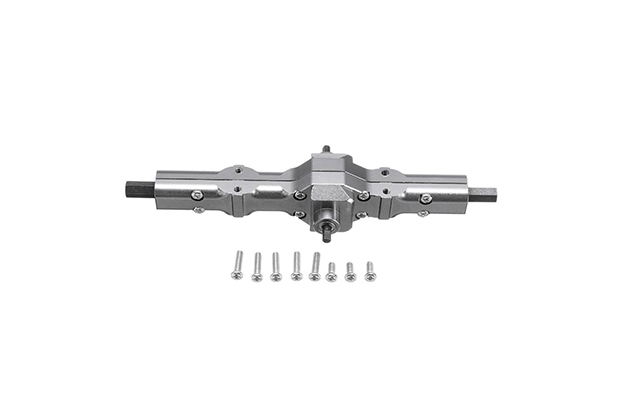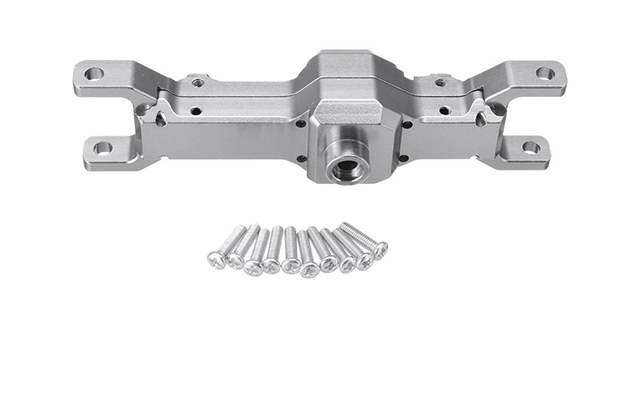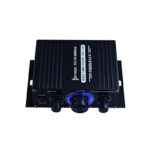How much will a new axle rod for my car cost? One of my tires seems a little off, and I’m concerned that I’ll have to get an axle replacement.
Few things are desirable to have to be repaired, especially the drive axel because axle repairs can be expensive. Depending on how much time the mechanic needs to spend working on the car, parts alone can cost anywhere from $100 to $950, while labor can cost up to $200.
Yes, it won’t need to be replaced every month or even every year. During the lifespan of an automobile, this type of repair or replacement is typically required once or twice. They do, however, occasionally arise sporadically, and you are less likely to be ready for such an event. We’ll look at extended auto warranties in more detail and see how much money they could potentially save you. So let’s get started by discussing what a drive axle is and how much a drive axle repair might cost.
What Is A Car Axle?
The car’s front and rear axles are crucial. The primary function of the axles, which are rods that connect the wheels, is to transmit power from the transmission to the wheels. It is what enables the wheels to turn. Along with supporting the vehicle’s weight and that of its occupants, the axles also carry the load. It is obvious that a damaged drive axle can cause serious problems for the vehicle and make it dangerous to drive. When the axles are damaged, you have much less control over your car, which increases the likelihood of an accident.
Will The Car’s Axle Break?
The axle is showing numerous symptoms of wear and tear. The axle will occasionally break on its own without suffering a significant impact, though this is uncommon. As opposed to this, the majority of drivers give you plenty of advance notice that something is wrong, giving you time to take appropriate action before a break occurs.
It could break while you are driving if you ignore the signs of a damaged car axle. In the event that this takes place, you might lose control of your car, which could lead to an accident and injuries. You need to know when to have the car checked out and fixed before this issue arises just for this reason.
Different Types Of Car Axles
Front Axles
The weight of the vehicle must be supported by the front axles, which must also absorb steering shock. The car is pulled by the live front axle, which also powers the wheels.
The constant velocity (CV) axle is the most typical type on a FWD vehicle. A CV joint is found on this axle, close to the wheel. With the aid of the CV joint, the driveshaft can continue to transmit power to the car at various angles without having to change its speed.
Given that they only carry out half as much work as a typical axle, these are also known as half-shafts. The front wheels have one CV axle each. The good news is that all that needs to be replaced is the bad side if there is one.
Stub Axles
The stub axle is also referred to as the stud axle. It does not support the entire axle, only one wheel. The stub axle would connect to the front if the car had RWD, and the opposite would be true if it had FWD. To provide angular direction during cornering, this stub axle is required.
Stub axles also come in a variety of varieties. A yoke hinge that uses a cotter and kingpin connects the Elliot to the front axle. There is also a Reverse Elliot that connects in the opposite direction but is identical otherwise.
The Lamoine stub axle gives you an L-shaped spindle in place of the yoke, but there is still a kingpin. On tractors, the front axle is where it is most frequently discovered. There is also the Reverse Lamoine, but this is only found on RWD vehicles’ front axles.
Rear Axles
The rear axle should be easy to spot because it is located near the back of the car. If the back wheels are also the drive wheels, it can be a live axle; otherwise, it’s a dead rear axle. Rear axles come in a variety of varieties, though.
A bearing on the axle housing and another in the axle casing help the semi-floating axle support the weight of the vehicle. These are typically found on mid-size and light-duty trucks. The full floating axle has a wheel hub that is connected to the axle tube and shaft and transmits torque. It has two wheel bearings, allowing the weight to be changed. Heavy-duty and 4WD trucks are the most typical vehicles that have this.
A three-quarter floating axle design is the final option. Compared to the alternatives, this extended tube has a rotating shaft that is more reliable. For maximizing side thrust and driving torque, it works best.
Signs Of A Bad Car Axle
A car’s axle damage may be indicated by a number of symptoms and signs. Regardless of the severity, you should always check the axles if your car has experienced significant physical stress, like in a collision.
The most common signs and symptoms include vibrations, noises, and grease leaking out to the wheels. We will examine each of these potential symptoms in more detail in the sections that follow.
The best course of action is to limit your driving if you think your axles may be damaged. Drive cautiously and safely if you must.
Vibrations When Driving
Vibrations that occur while the car is in motion are the most severe indication of a bad axle. The vibrations may be so severe that passengers can feel them, but they may only be isolated to the steering wheel.
The car’s handling will be significantly impacted by the axle’s condition because it supports the weight of the vehicle and holds the wheels in place.
The car axle may need to be completely replaced if you notice these vibrations. Your car may be shaking for a variety of other reasons, though.
Bad Noises
A CV joint issue is probably present if you hear a clicking sound when turning. If it turns out that the CV joint is the only problem, the axle can be repaired rather than replaced.
Unfortunately, a bad CV joint may also indicate that the entire axle needs to be completely replaced.
A clicking noise usually presents itself when the joint is bad, while a rhythmic knocking is more likely to suggest damage to the axle.
Instability While Driving
Your car may seem to be pulling to one side. The driver of this might be challenging to identify. Ask a friend to look at your wheels while the car is moving if you believe you have faulty axles.
Grease Leaking
The moving parts in CV joints, which are constantly rotating, need to be lubricated. Grease is used to lubricate all the parts and ensure that the joints function properly.
If it turns out that there is a leak, all the grease will be dripping and the joint is likely to suffer additional harm.
Along with the above-mentioned symptoms, the grease may leak onto the wheels or under the car.

How Much Do Axle Repairs Cost?
The price can change depending on whether you need the front or rear axle repaired. Although replacing the entire system is occasionally necessary, the front axle is typically less expensive than the rear axle. The cost will also vary depending on the car you drive. However, with your typical city cars, there are average costs that one can anticipate.
- The cost of fixing the front axle can range from $600 to $700.
- Anywhere from $600 to $1050 could easily be spent on an axle rebuild or replacement.
- The cost to repair the rear axle can be between $900 and $2,000
Ultimately, knowing every detail only benefits you if an unexpected event occurs. If your vehicle requires axle repair, you must get it done immediately because otherwise, the vehicle will not function properly. It is always best to be cautious, regardless of whether you have the ability to save for such an eventuality or you need the availability of extended car warranty plans.
What Is The Price Of An Automobile Axle Replacement?
On average, you can expect it to cost between $880 and $959 to replace your car axle shaft, depending on the type of car you drive and which axle is broken. However, it’s possible that you’ll just need to repair your axle rather than replace it. This has a lower cost; repairing your front axle could run you $550 to $740, and repairing your rear axle could run you $480 to $550.
The following warning signs could appear if your axle is the issue:
- Your car strains to move.
- When you shift into drive, your car makes an audible clunking or sputtering sound.
- You notice a shaking or rumbling coming from one wheel, particularly when turning or accelerating.
Regardless, you should talk to your mechanic right away to get the problem fixed, as problems with your tire alignment can be extremely dangerous. A tow truck can be used to transport your vehicle to the shop if the tire is particularly out of alignment.
Can I Still Operate My Car If One Of The Axles Is Broken?
A damaged axle will make clicking noises and vibrate the steering wheel. It might not be entirely broken yet, but it could do so at any moment.
You risk losing control if the axle breaks while your car is in motion. Accidents could happen as a result, putting other people or yourself in danger.
A damaged axle is much simpler and less expensive to fix than a collision. As soon as you see a problem, fix your axle.
Driven With A Bent Axle, Is It Safe?
Your vehicle’s axles, both the front and rear ones, are absolutely essential to its proper operation. They take the engine’s power and transmit it to the wheels along with the transmission. Although they are made to last, if you hit a pothole at high speed, run over a curb, or are in an accident, they may be bent or broken. It depends on the following factors as to whether you can drive with a bent axle.
Severely Bent Axles
Axle bends that are greater than a quarter inch are not safe to drive on. Before you can drive on it safely, it must be towable, and the axle must be replaced. Badly bent axles can damage bearings, wheel hubs, and other powertrain parts in addition to damaging CV joints in a short amount of time.
Slightly Bent Axles
You can briefly drive on an axle that has only a slight bend in it. Driving will cause you to vibrate and turn with difficulty. Hubs, bearings, and CV joints will be harmed if left unattended for an extended period of time. Get your car to a collision repair facility as soon as possible if you notice a lot of vibration following an accident.
Does My Insurance Cover Upkeep And Repairs?
Many axles can last the lifetime of the vehicle if they are properly maintained. Even though insurance doesn’t pay for routine repairs, it might pay for axle repairs if they were damaged by a covered item.
If your axle broke as a result of an auto accident, policies with comprehensive and collision coverage might cover the cost of repairs. Even repairs from severe weather are covered by some policies.
As much coverage as you can get should be in your insurance policy, make sure. You can then drive stress-free.
Will My Insurance Be Sufficient If The Need Arises?
Beyond the monthly cost, there are many other things to think about when it comes to car insurance. It can be challenging to find a policy that will protect you when you need it, has a low deductible, and provides a number of discounts; that’s why we’ve done the research for you.
Conclusion
Whether you need to fix the front or rear axle will determine how much it will cost to fix your car axle. Most drivers discover that they must spend between $450 and $750 on this necessary service.



